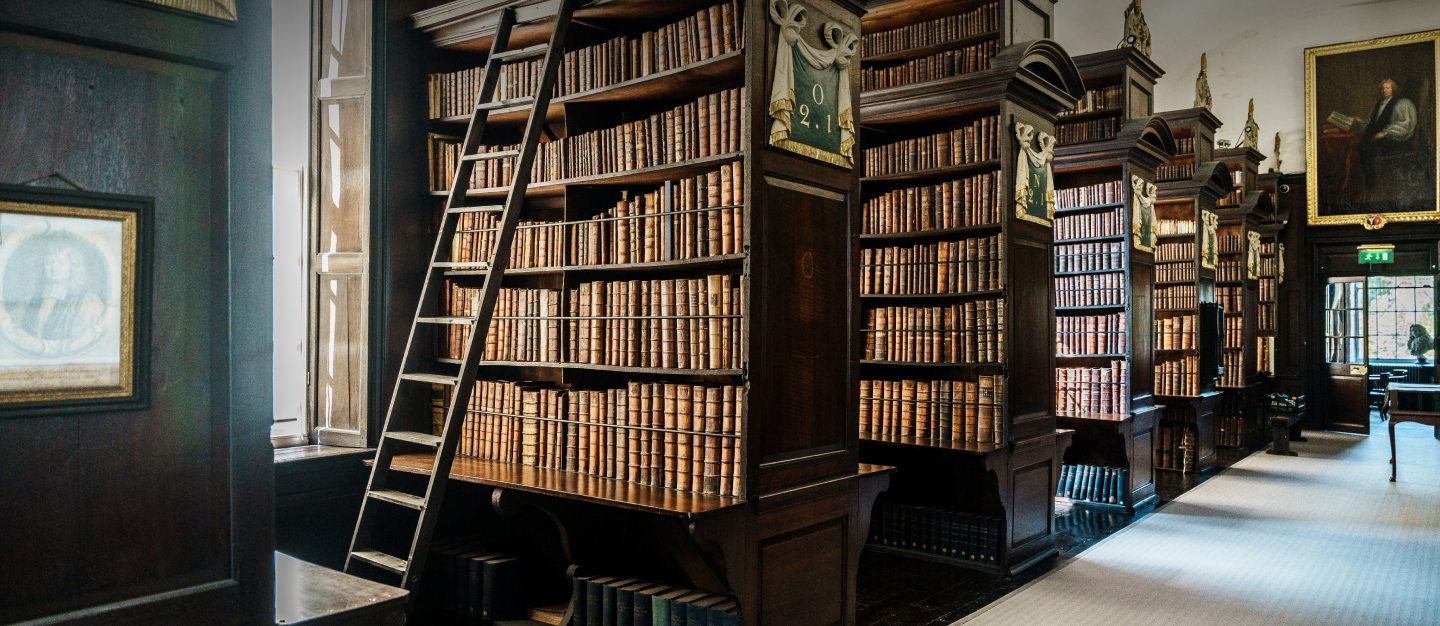
Marsh’s Mathematical Marvels
Dr Cynthia Huffman explores the mathematical marvels in Narcissus Marsh’s personal collections.
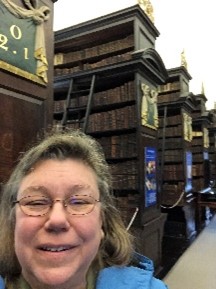
Prof Cynthia Huffman at Marsh’s Library
I was fortunate to receive a Maddock Research Fellowship allowing me to spend a week as a reader at Marsh’s Library.
The purpose of the fellowship was to gather materials to share with teachers and researchers from the amazing mathematical treasures available at Marsh’s Library. I plan to publish a series on the Library’s treasures, and to to produce Open Education Resources (OERs) that will introduce students to original maths sources to help deepen their understanding of algebra, geometry and calculus.
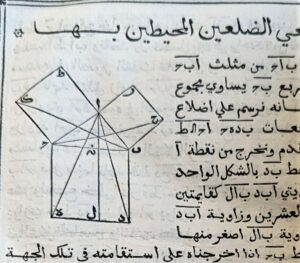
Pythagoras’ theorem, in Euclid’s Elements
With the invaluable help of librarian Amy Boylan and her intern Lara Berthold, I looked at approximately 110 books related to mathematics and applications of mathematics published from 1516 to 1704. From the titles and marginalia in Archbishop Marsh’s personal books, it is apparent that he could read several languages, and in addition to his Biblical and theological studies, he had an interest in mathematics, astronomy, and music.
Most of the books that I looked at were in Latin, but there were a few in other languages including a version of Euclid’s Elements in Arabic.
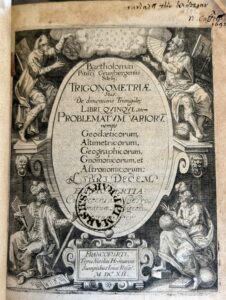
Title page from Trigonometriae (1612)
One of the many highlights of my research at Marsh’s Library was seeing the book Trigonometriae sive de dimensione trianguilos libri quinque by Bartholomaus Pitiscus. The term “trigonometry” was coined inthis book. First published in 1595, Marsh’s copy is a revised edition from 1612. The book contains tables for all six trigonometric functions and includes the use of a decimal point to separate the integer part from the fractional part. This notation was later used by John Napier, who is often given the credit for being the first to use it in print, although Pitiscus’ use predates his.
It is clear from Archbishop Marsh’s personal collection of books that this clergyman and scholar had a great interest in mathematics and its applications. I am grateful for the support of a Maddock Research Fellowship which allowed me to research these mathematical treasures. I look forward to creating educational activities which will enable me to share with students Archbishop Marsh’s fascination for mathematics.
Professor Cynthia Huffman, Dept. of Mathematics, Pittsburg State University, Kansas
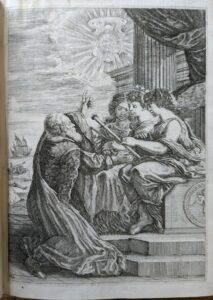
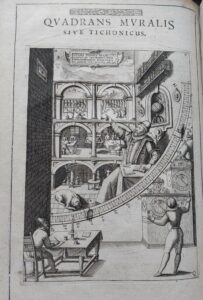
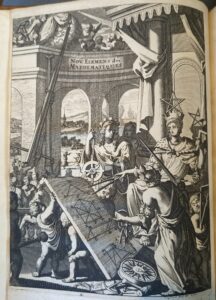
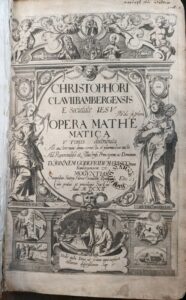
Engraved frontispieces, left to right: Galileo’s Works, v.1 (1655), Tycho Brahe Astronomiae Instauratae Mechanica (1602), Jean Prestet Nouveaux Elemens des Mathematiques (1694), Christoph Cluvius’ Mathematical Works, v.1 (1611)






